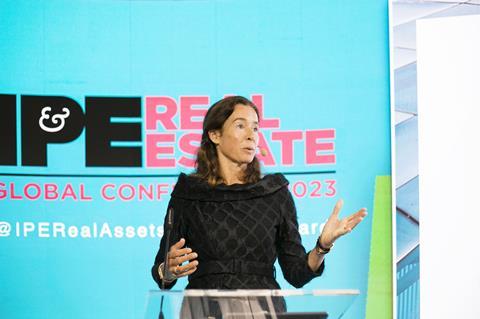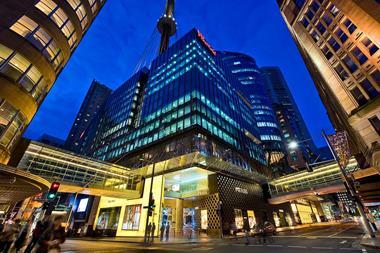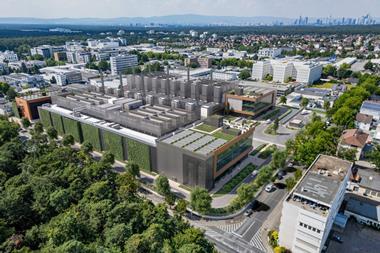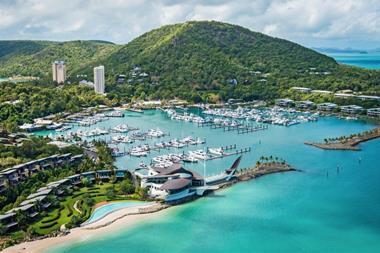
The time is now to implement green real estate strategies, according to Sophie van Oosterom, head of global real estate and climate change risk at Schroders Capital. But, speaking at the IPE Real Estate Global Conference & Awards in Milan this week, she painted a gloomy picture of the real estate industry’s progress to date to mitigate climate change in any meaningful way.
“Given the fact that all of us have been working for the last five, 10 or 15 years trying to mitigate climate risk in the real estate industry, we can now figure out that actually it hasn’t really worked and we need to deal with the consequences. It is quite disappointing. But it’s the reality,” she said.
In the same week that the World Meteorological Organisation warned that global temperatures were likely to breach the 1.5C threshold by 2027, Van Oosterom reminded delegates that the Intergovernmental Panel on Climate Change (IPCC) recently reported that some of the predicted impacts of climate change were now looking inevitable.
She said: “They believe that action is needed now. And I want to make sure that everybody understands that action is needed now. The IPCC believes that the actions that we implement today will have an impact for the next 1000s of years. And no continent is spared.”
She warned delegates: “How to adjust to climate change now is a highly relevant topic for us. And given the total impact and the scale of that on our industry, it warrants a discussion amongst all of us. And importantly, it warrants cooperation. Just as our industry is claimed to be responsible for 40% of the carbon emissions, building-by-building action is not sufficient.”
Van Oosterom said that “resilient assets in an unprepared city actually do not exist”, adding: “It’s therefore a topic that is incredibly broad, complex and has many facets that need to be considered all at the same time. We need to look at the regional impacts; we need to look at the city responses and resilience. We need to look at what we can do with our assets. And all at the same time, the implications of cost.”
Equity values at risk in portfolios
“The number of severe climate events has quadrupled since the 1980s,” van Oosterom said. “So I don’t think there’s any disputing that something’s going on. The current expectation, with the policies we have in place today, is that we’re moving to an increase in temperature of 2.7 degrees by the end of this century.
“And the financial impacts of this are increasing significantly over the years to come, as we have to make investments into both mitigation and adaptation. We’ve been focusing on the costs. But there’s a huge amount of equity value at risk. And I’m absolutely sure that we’re not yet accounting for those equity values at risk in our valuations just yet.”
Mass climate-related migration will inevitably follow and this will have further implications for costs and valuations. “I’m not even talking about the secondary impacts of rising utility costs, food insecurity, health risks and so on. In short, our cities will be under massive pressure to adapt, and we have to help,” van Oosterom said.
“It’s obvious to everyone as we see climate events arise, but as we haven’t really talked about this as an industry I thought it would be good to [understand] that while starting our efforts on net zero are important, we need to get ready for the next stage as well.”
Van Oosterom urged investors and managers to think hard about how to take all this into account in their investment strategies. “How do we mitigate and adapt our portfolios? How should our view on winning cities be adjusted to take into account these risks? And also these potential opportunities? Where should we focus and where should we not? Because there’s still a lot of data missing. We’re projecting into the future and we’re trying to find out what is going to happen.”
Van Oosterom said: “First of all, we start with a review of the elevated regional risk factors. Then we need to look at the way the cities are constructed as this will have an impact, ultimately, on those climate risks. If you think for example, about the urban heat island effect, that leads to cities that are full of concrete experiencing temperature rises of two or three degrees in the summer which can mean thousands more deaths. So the way the city is constructed and the way it’s operated has an impact on these risks as well.
“Also on a city level, high rise [buildings] need mechanically ventilated space, so the energy demand has an impact, as well as the infrastructure and how wind tunnels are operated. To have a positive impact, we need to take the right measures to mitigate the climate change effects.”
The second step involves overlaying the resilience of city infrastructure. This relies on local government policy to deal with the adaptation to climate change. Van Oosterom said: “We need to look at what the policies are and what’s the ability to adapt? European cities must be in really good shape, with strong governance. How relevant are the policies? And how up to date?”
The third step focuses on the secondary impacts of climate change. “These include the business days lost and what’s the impact ultimately, of heat on people’s health and well-being,” van Oosterom said. “Can they come to the office? And why is this important? Because it allows us to take a third step and that is which sectors maybe are more impacted by certain climate change effects than others.
“If you think about the days lost in business the estimate was, in total 1.3m days were lost in the US as a result of flooding last year. That is expected to rise by about 30%. The consequences for that will be biggest on retail. Why? Retailers are typically smaller, they go out of business, people move out of town and so the impact on retail and maybe leisure of those flooding events is a lot bigger than maybe the offices.
“The impact could be high on leisure and it could be high again on agriculture and it could be high on construction workers. If you can’t work outside because it’s too hot, then obviously the impact on that sector will be biggest. So it is an important layer to put on top.”
Added to all this, van Oosterom pointed out, is the thorny issue of insurance. “Insurance premiums don’t seem to reflect the risk that is forecast to happen. Insurance premiums are mainly set on backwards-looking metrics, looking backwards on what has happened already, with maybe a slight adaptation for expectations going forward.
“Ultimately, insurance coverage will go up and the premiums will be massive, and some assets will even become uninsurable. So it’s super important to get on the same page with the insurance companies as well as with your own risk parameters of what you find acceptable risk and how to deal with them.”
To read the latest edition of the latest IPE Real Assets magazine click here.























